Protecting Reefs: The Best Reef-Safe Sunscreens for Snorkeling
21/05/2025If you’re planning a snorkeling trip to tropical waters with vibrant coral reefs, there’s one thing you shouldn’t forget: reef-safe sunscreen. While protecting your skin from UV rays is essential, it’s equally important to protect the ocean ecosystems you’re exploring. Many sunscreens contain harmful chemicals that damage coral reefs and marine life. At Rooty Trip, we always encourage eco-conscious travel, especially when it comes to preserving Phu Quoc’s stunning marine biodiversity. In this article, you’ll learn why choosing reef-safe sunscreen for snorkeling matters, what to avoid, and which products are best for both you and the sea.
What does “Reef-Safe” really mean?
The term reef-safe sunscreen refers to products that are free from chemicals known to harm coral reefs and marine ecosystems. To be considered truly reef-safe, sunscreens must avoid ingredients such as oxybenzone, octinoxate, octocrylene, and avobenzone, which contribute to coral bleaching, DNA damage in marine organisms, and disruption of aquatic life.
Instead, reef-safe sunscreens rely on non-nano zinc oxide or titanium dioxide, which act as mineral sunscreens that sit on the skin and reflect UV rays rather than absorbing them.
The environmental impact of traditional sunscreen
Each year, an estimated 14,000 tons of sunscreen enter coral reef environments. Even small amounts of harmful ingredients can impair coral growth, weaken coral larvae, and contribute to coral reef degradation.
Regions like Hawaii, Palau, and parts of Mexico have banned sunscreens containing reef-damaging ingredients to combat this issue. Choosing eco-friendly sunscreen isn’t just a trend – it’s a necessity for marine conservation.
Key ingredients to look for (and Avoid)
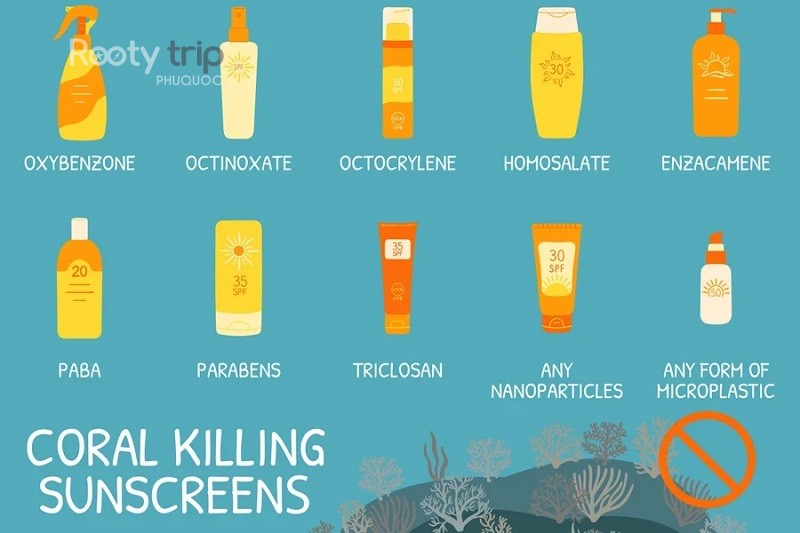
Safe ingredients in reef-safe sunscreen
- Zinc Oxide (Non-Nano)
- Titanium Dioxide (Non-Nano)
- Natural oils and biodegradable base formulas
These ingredients are marine-safe, do not bioaccumulate in the ocean, and are suitable for sensitive skin, children, and daily use.
Ingredients to avoid
- Oxybenzone
- Octinoxate
- Octocrylene
- Avobenzone
- Homosalate
These compounds are linked to coral reef damage and are not allowed in some reef-protected areas.
Best reef-safe sunscreens for snorkeling (2025 Picks)
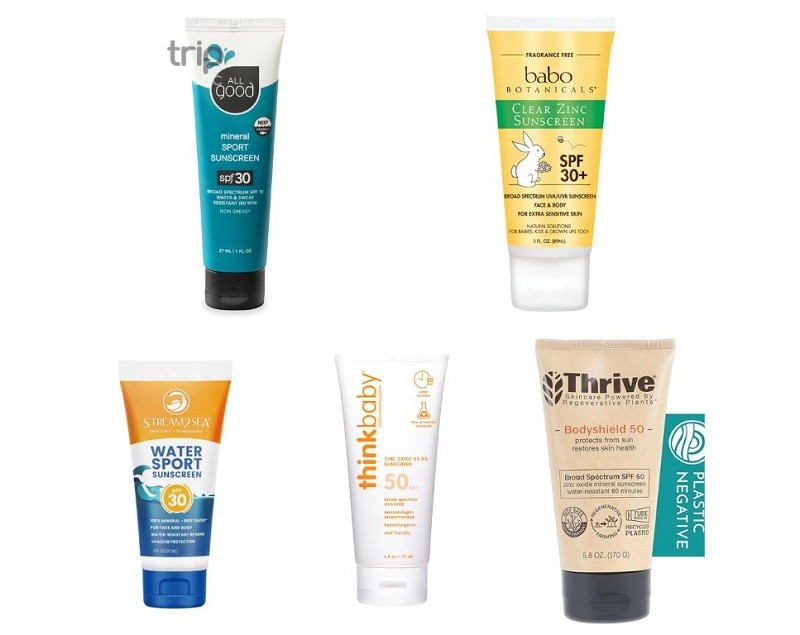
Choosing the best reef-safe sunscreen can be overwhelming, so we’ve selected top-rated options known for performance, reef safety, and water resistance:
Stream2Sea water sport sunscreen SPF 50
- Biodegradable sunscreen for snorkeling
- Non-nano zinc oxide
- Water-resistant up to 80 minutes
- Eco-tested and certified for marine safety
Thrive natural care body mineral sunscreen
- SPF 50, reef-safe, water-resistant
- Made with Costa Rican superplants
- Lightweight and non-greasy
All good face & body sunscreen lotion
- Reef-friendly mineral sunscreen
- Available in SPF 30 and SPF 50
- Vegan, cruelty-free, and biodegradable
Thinkbaby safe sunscreen SPF 50+
- Ideal reef-safe sunscreen for kids
- Pediatrician recommended
- Water-resistant and gentle on the skin
Babo botanicals clear zinc sunscreen
- Great for sensitive skin and snorkeling
- Free of harmful UV filters and preservatives
Wearing reef-safe sunscreen is just one step. To fully protect yourself and the ocean while exploring Phu Quoc’s coral reefs, don’t miss our detailed Snorkeling Tips & Safety Guide.
How to use reef-safe sunscreen correctly
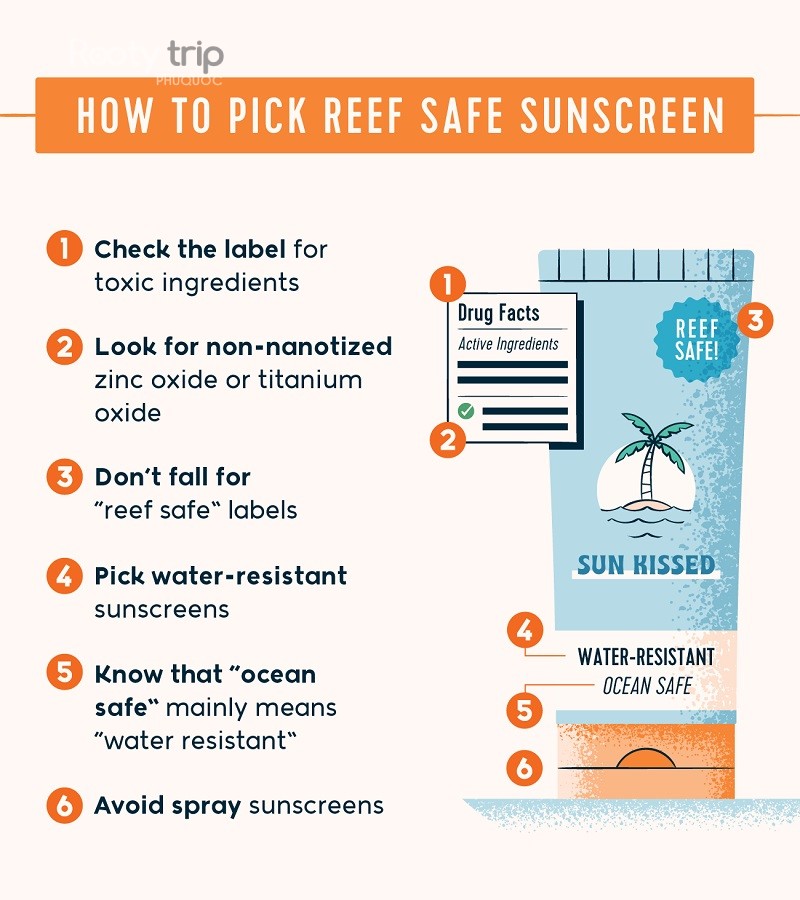
Apply before you swim
Apply 15–20 minutes before entering the water. This gives the mineral sunscreen time to bind to your skin. Don’t forget common burn spots: ears, neck, behind knees, and feet.
Reapply often
Reapply every 2 hours or after swimming, sweating, or towel-drying – even if the product is labeled as water-resistant.
Extra protection tips for snorkelers
- Wear UPF-rated clothing like rash guards and long-sleeve swimwear.
- Use wide-brim hats and UV-protective sunglasses.
- Avoid snorkeling during peak UV hours (10 a.m. – 2 p.m.).
Regions with sunscreen regulations
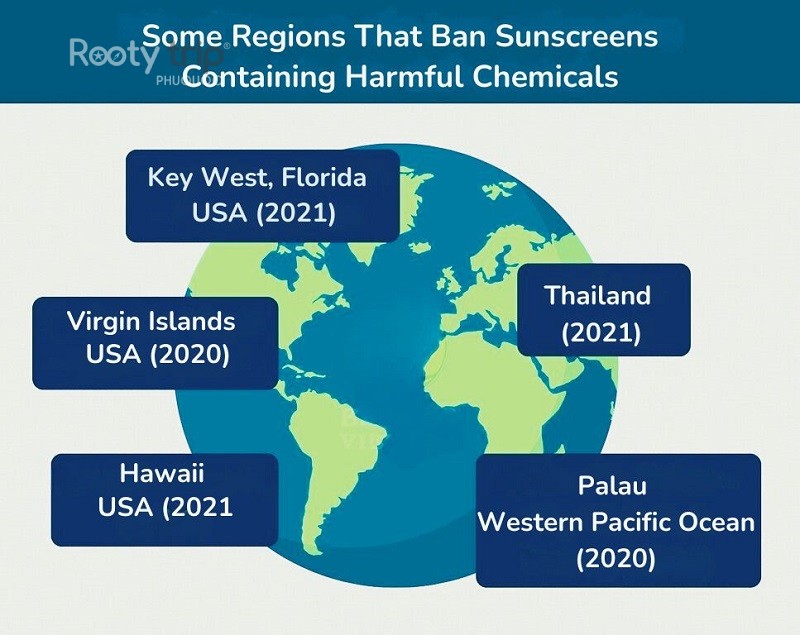
Many destinations are taking action to protect their reefs:
- Hawaii: Bans oxybenzone and octinoxate in all sunscreens
- Palau: Bans all non-reef-safe sunscreens
- Bonaire, Thailand, and parts of the Caribbean are adopting similar rules
If you’re visiting these locations, reef-safe sunscreen SPF 50 is often the only legal and responsible option.
Why your choice matters
By choosing reef-safe sunscreen, you’re taking a stand for marine conservation. Coral reefs are home to 25% of marine species and are vital to ocean health. Small choices, like your sunscreen, ripple out to make a real impact.
When snorkeling, your gear should include a reef-safe sunscreen – not just for your own protection, but for the reefs you admire. Look for mineral-based, oxybenzone-free sunscreen, and apply it correctly. Better yet, combine it with sun-protective clothing for full coverage.
Not only does reef-safe sunscreen protect your skin and marine life – Rooty Trip also brings you professional, safe, and unforgettable snorkeling tours around the stunning reefs of Phu Quoc Island.
Let us take you to the most breathtaking coral spots, where you can swim with tropical fish, explore vibrant marine ecosystems, and fully immerse yourself in nature’s beauty.
Book your snorkeling tour with Rooty Trip today and experience the true magic of Phu Quoc in a sustainable way! Learn more about why this activity is a must-try in our full guide Why Choose Snorkeling in Phu Quoc.




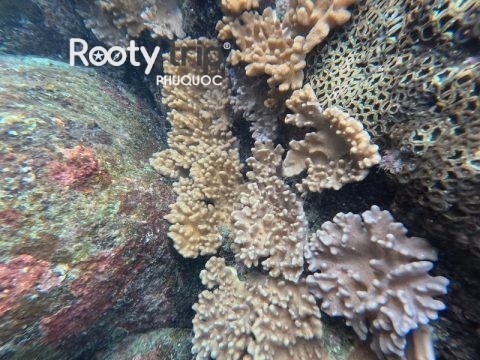

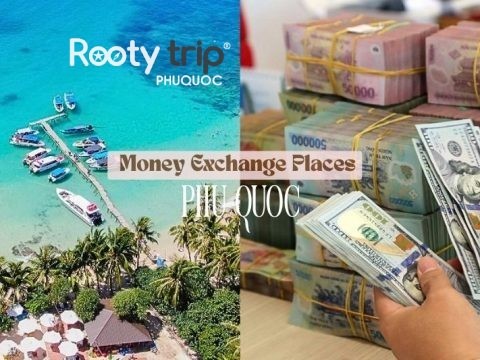



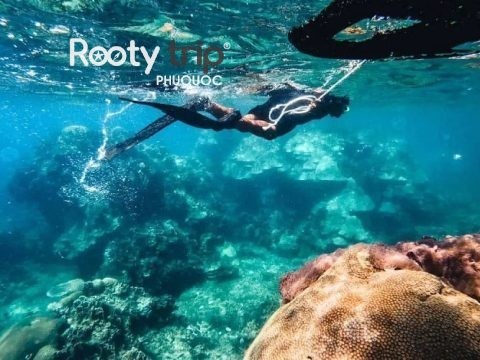
Comment (1)
[…] Smart: Bring lightweight clothing, a wide-brimmed hat, plenty of reef-safe sunscreen, and motion sickness tablets if you’re prone to […]
Comments are closed.